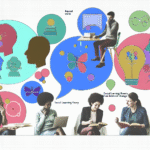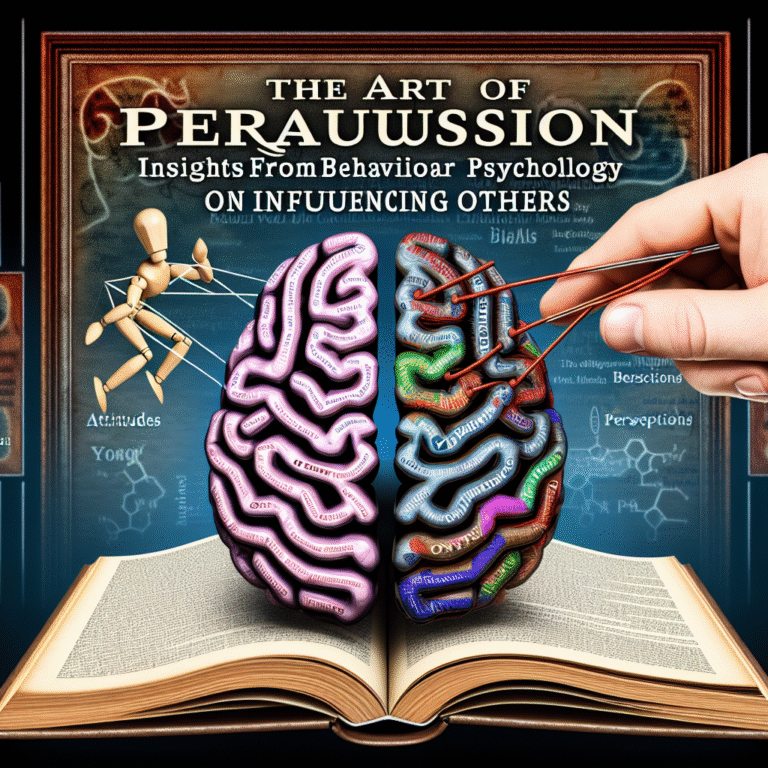
The Ultimate Power of Persuasion: Using Behavioral Psychology to Enhance Brand Messaging
Introduction
In a world flooded with choices, the ability to persuade has emerged as one of the most powerful skills any brand can possess. The relevance of The Power of Persuasion: Using Behavioral Psychology to Enhance Brand Messaging cannot be overstated. Consumers are inundated with millions of messages daily, ranging from social media ads to email newsletters. In this ocean of information, brands face the formidable challenge of not just being heard but compelling their target audience to act. So, how does a brand cut through the noise and create messaging that resonates and converts?
Enter behavioral psychology—the study of how we think, feel, and behave. By tapping into the principles of behavioral psychology, brands can craft messaging that not only captures attention but also motivates action. This article will explore the intricacies of persuasive communication, utilizing case studies to illustrate practical applications, and providing actionable insights to enhance your messaging strategy.
Understanding Behavioral Psychology
The Basics of Behavioral Psychology
At its core, behavioral psychology examines how external factors shape our decisions and actions. Understanding these factors enables brands to strategize their messaging effectively. Let’s explore a few key principles:
Reciprocity: People tend to feel obliged to return favors. Brands can leverage this by offering something of value upfront—like a free ebook or a discount.
Social Proof: Individuals are influenced by the actions and opinions of others. Testimonials and user-generated content can enhance credibility.
Scarcity: The fear of missing out (FOMO) can drive quicker decision-making. Limited-time offers or exclusive products can create urgency.
- Anchoring: The first piece of information we encounter serves as a reference point. Pricing strategies often utilize this principle—showing the original price first can make discounts more appealing.
Incorporating Behavioral Psychology into Brand Messaging
The Power of Personalization
Personalization is more than just addressing a customer by their first name. It’s about tailoring messages that align with individual preferences, behaviors, and interests. According to a study by Epsilon, 80% of consumers are more likely to make a purchase when brands offer personalized experiences.
Case Study: Netflix
Netflix has mastered the art of personalization. By leveraging user data, the platform tailors recommendations based on viewing habits. Each user sees a unique homepage that highlights shows and movies they are likely to enjoy. This not only enhances user experience but boosts subscriptions and engagement rates.
Analysis: Netflix showcases The Power of Persuasion: Using Behavioral Psychology to Enhance Brand Messaging by connecting with users through personalized content. This not only satisfies the principle of reciprocity but also leverages social proof through user ratings.
Storytelling: The Emotional Connection
The Importance of Narrative
Humans are wired for stories. A compelling narrative can evoke emotions and inspire action. In brand messaging, storytelling creates connection and relatability.
Case Study: Nike
Nike’s “Just Do It” campaign is a prime example of storytelling. The brand doesn’t just sell sports apparel; it sells inspiration and motivation. Advertisements often feature real athletes overcoming adversity, creating an emotional connection with viewers.
Analysis: Nike effectively employs The Power of Persuasion: Using Behavioral Psychology to Enhance Brand Messaging through powerful narratives that resonate with customers. Their messages never feel preachy; instead, they motivate and inspire.
Creating Your Brand’s Narrative
To leverage storytelling in your brand messaging:
- Identify your brand values.
- Share personal anecdotes or customer experiences.
- Use visuals to enhance emotional connections.
Visual Content: The Power of Image
Why Visuals Matter
Research shows that visuals are processed 60,000 times faster than text. Effectively using visual content can significantly enhance brand messaging.
Table 1: Visual Content Impact Statistics
| Type of Content | Engagement Rate |
|---|---|
| Text-Only Posts | 2% |
| Images | 65% |
| Videos | 80% |
| Infographics | 40% |
Case Study: Airbnb
Airbnb has become synonymous with stunning visuals. By showcasing high-quality images of properties and experiences, they foster an emotional connection. Their website and social media channels leverage visuals to convey supportive, home-like feelings to potential travelers.
Analysis: Airbnb’s strategy aligns perfectly with The Power of Persuasion: Using Behavioral Psychology to Enhance Brand Messaging by evoking emotions through imagery, enticing potential customers to explore and book.
Social Influences: Leveraging Community
Building a Brand Community
Social proof isn’t just about testimonials; it’s about creating a sense of community. Brands that foster community engagement often see increased loyalty and advocacy.
Case Study: Glossier
Glossier, a beauty brand, thrives on community-generated content. They encourage customers to share their experiences on social media, effectively utilizing user-generated content. This fosters loyalty and trust as potential customers see authentic reviews from peers.
Analysis: By inviting its customer base to participate, Glossier embodies The Power of Persuasion: Using Behavioral Psychology to Enhance Brand Messaging through community engagement—leveraging social proof effectively.
Crafting a Call-to-Action (CTA)
The Importance of a Strong CTA
A well-crafted call-to-action can make or break your marketing efforts. CTAs should create urgency, be actionable, and align with the messaging’s tone.
Examples of Effective CTAs
- "Download Now for Free!"
- "Join Our Community and Save 20% Today!"
- "Limited Time Offer—Get Yours Before They’re Gone!"
Case Study: HubSpot
HubSpot has perfected the art of CTAs. Their landing pages often feature engaging CTAs that entice visitors through exclusive offers and free resources.
Analysis: HubSpot’s effective, action-oriented CTAs exemplify The Power of Persuasion: Using Behavioral Psychology to Enhance Brand Messaging. By creating urgency, they guide users to take the next step.
Conclusion
The ability to persuade consumers effectively hinges on understanding human behavior. By employing principles of behavioral psychology, brands can enhance their messaging strategically. The key takeaways from The Power of Persuasion: Using Behavioral Psychology to Enhance Brand Messaging include the importance of personalization, storytelling, community engagement, and effective calls to action.
Embrace these principles to enhance your brand messaging, ensuring that you not only capture attention but also create lasting connections with your audience. Remember, you’ll not just be selling a product; you’ll be creating an experience, an emotion, and a community.
FAQs
1. What is behavioral psychology?
Behavioral psychology studies how external factors influence our thoughts and actions, helping brands understand consumer behavior.
2. How can I personalize my brand messaging?
Use data analytics to segment your audience and create tailored messaging that reflects individual preferences and behaviors.
3. Why is storytelling important in brand messaging?
Storytelling evokes emotions and creates connections, making your messaging more relatable and memorable.
4. How do visuals influence consumer decisions?
Visual content is processed much faster than text and can evoke emotions, driving engagement and decision-making.
5. What are effective examples of CTAs?
Effective CTAs are actionable and instill a sense of urgency, such as "Download Now" or "Limited Time Offer."
Final Thoughts
In a competitive landscape, harnessing The Power of Persuasion: Using Behavioral Psychology to Enhance Brand Messaging is essential for any brand looking to thrive. By exploring these principles, you can optimize your messaging strategy to create deep connections with your audience and drive significant results. The journey of persuasion is an ongoing process—continue learning, adapting, and engaging!














